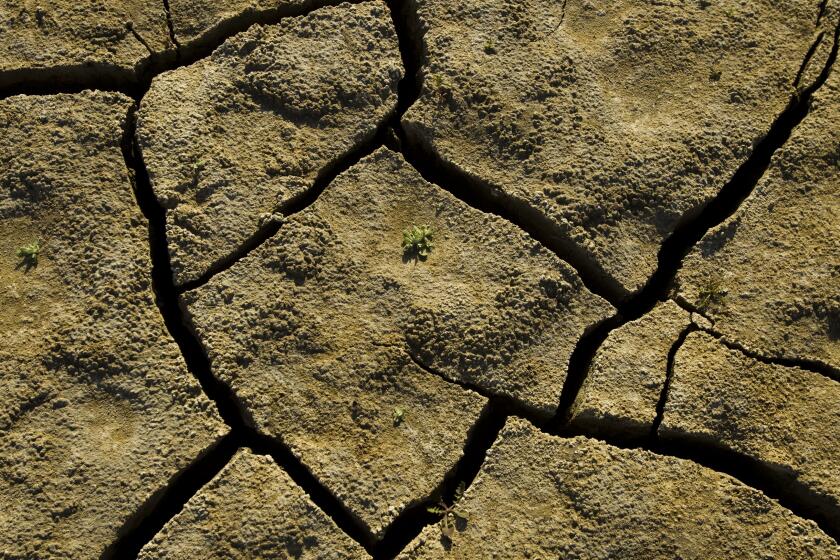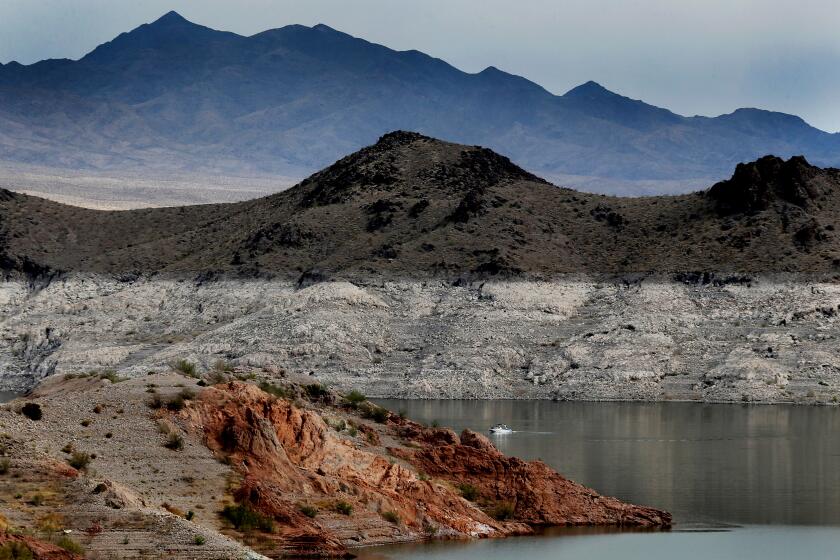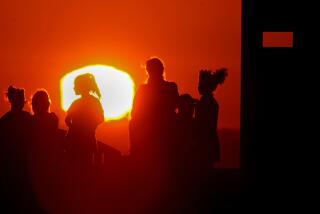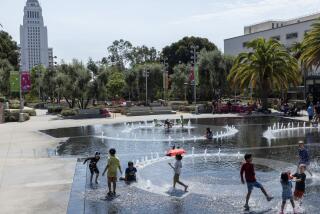First heat wave of the season to bake Southern California amid worsening drought
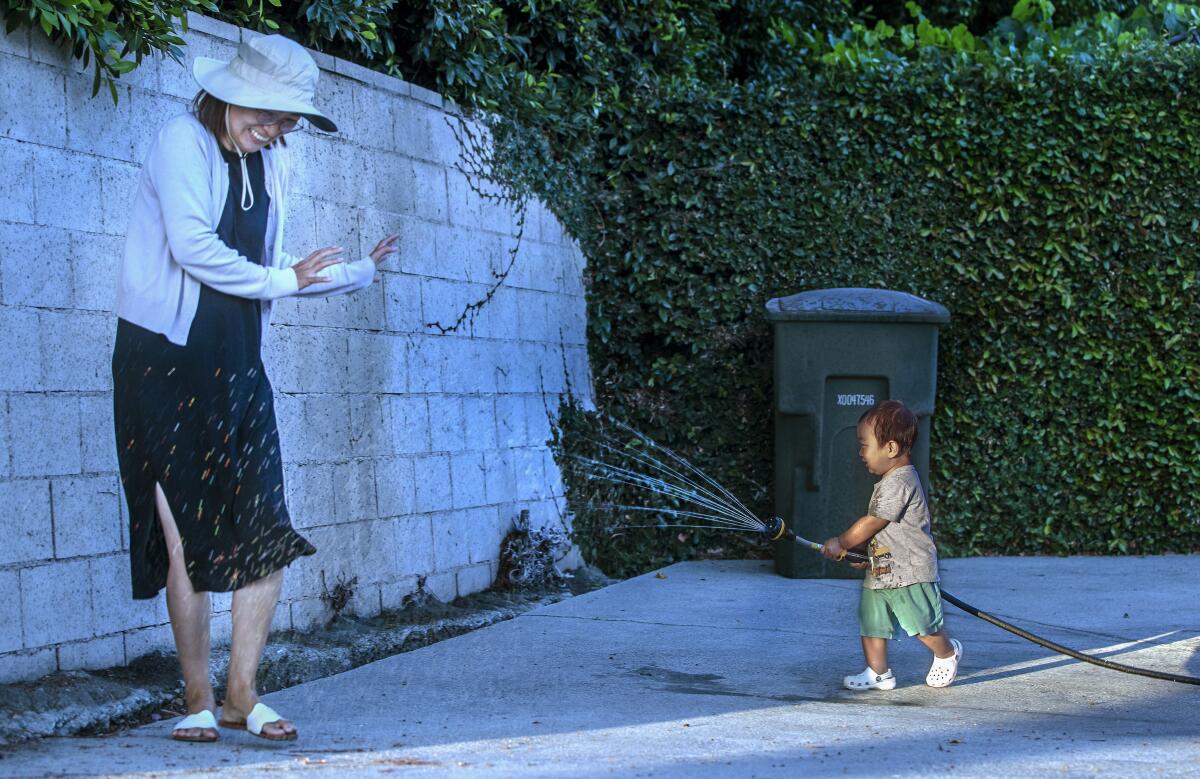
- Share via
Amid worrisome drought conditions plaguing much of the American West, the first heat wave of the season is headed to Southern California.
The National Weather Service warned of the potential for record-breaking heat, beginning Monday and stretching late into next week.
Tuesday through Thursday will be the hottest days in the Los Angeles area, said Mike Wofford, a meteorologist with the National Weather Service in Oxnard. Temperatures could reach 110 degrees in the Antelope Valley and 107 in the San Fernando Valley. Downtown L.A. will soar into the 90s, and the beaches will reach the mid-80s.
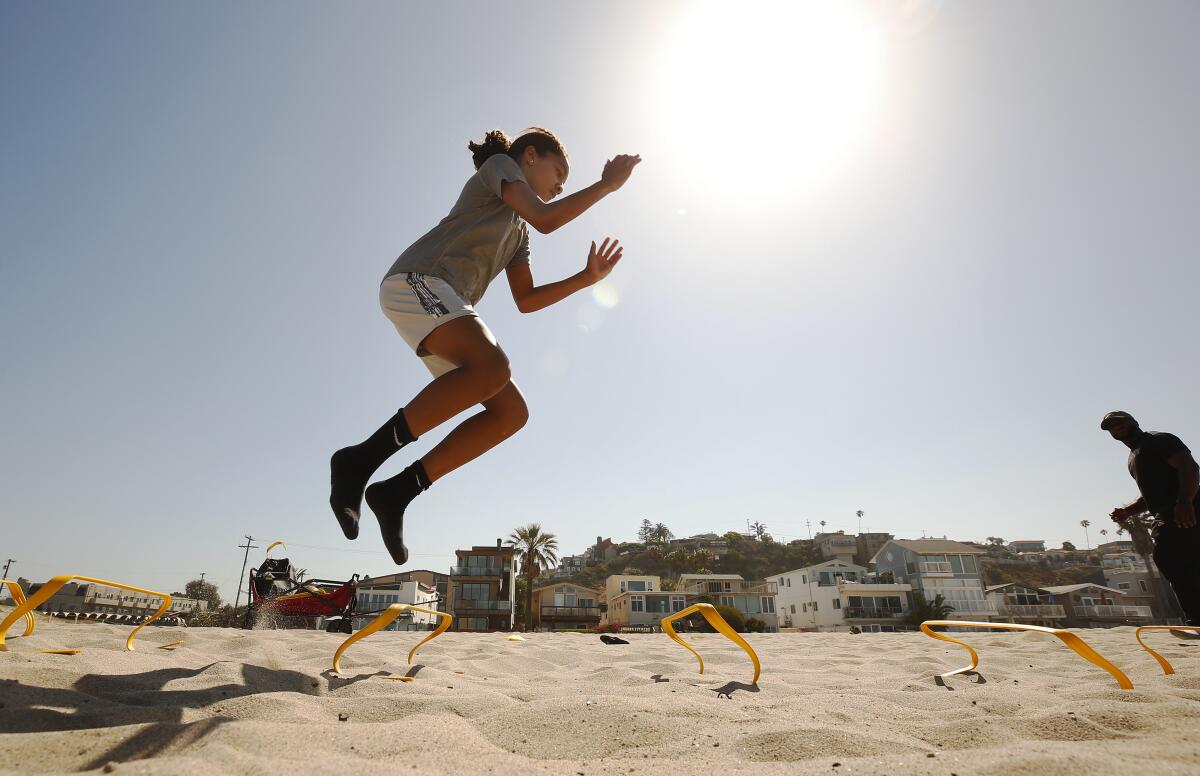
Different areas will peak on different days, Wofford said, but the current prediction is that Tuesday will be the warmest day for the coast, while Wednesday and Thursday will be the hottest for the inland areas.
“When you’re talking about temperatures that high, that’s obviously above normal any time of year,” Wofford said, noting that June in Los Angeles is typically still mired in a marine layer of clouds and fog.
“It is a little soon to be having these kinds of temperatures,” he added.
California has entered another drought. But depending on who you ask, the last one may have never really ended.
And it’s not just Los Angeles that will feel the heat.
Above-average temperatures are expected across much of the Western U.S. over the next six to 10 days, including the Great Basin, the Southwest and the Rockies, according to the National Weather Service’s Climate Prediction Center.
In the Coachella Valley, temperatures Wednesday and Thursday could skyrocket from 116 to 120 degrees, said Philip Gonsalves of the National Weather Service’s San Diego office. Those highs could set daily records.
Much of the Inland Empire will likely also be in the triple digits next week, he said.
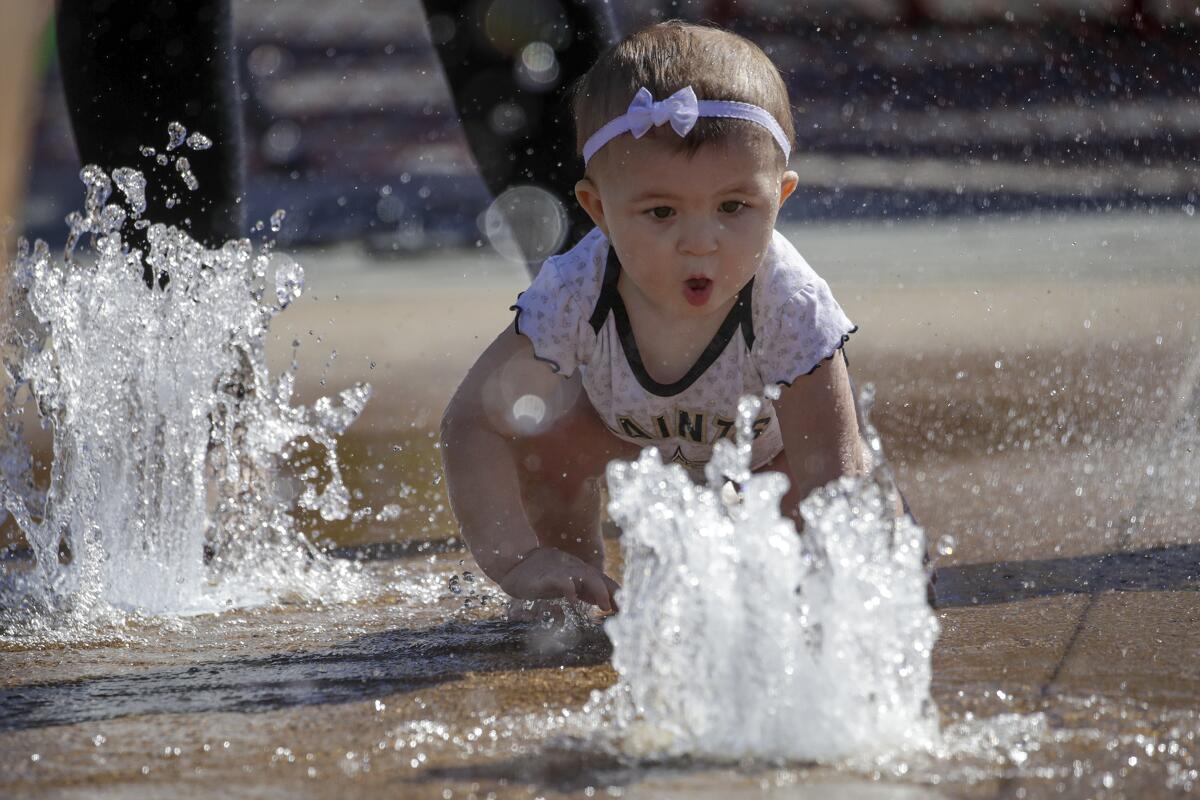
The extreme heat is particularly concerning given what the National Oceanic and Atmospheric Administration is calling an “extreme and exceptional drought,” which has expanded across large portions of California, Nevada, Utah, Arizona, New Mexico and other Western states.
The Bay Area this week declared a water shortage emergency. On Friday, Lake Mead, a key reservoir on the Colorado River, dipped to a record low level.
Climate experts have been sounding the alarm about how the combination of heat and dryness can create swaths of bone-dry vegetation that can act as fuel for wildfires. Last year was the state’s worst wildfire season on record, and already, 2021 is primed for another severe season.
“We did have a rainy season that underperformed, and didn’t provide us with average rainfall,” Gonsalves said.
Heat also makes firefighting that much more difficult, he added, so if blazes do ignite, fire crews will have to contend with dangerous conditions.
Lake Mead, a key reservoir on the Colorado River, is shrinking to record low levels, prompting concerns throughout the West about water supply.
According to Wofford, the incoming heat wave is being driven by both a high-pressure ridge building up from the Southeast and a weakening onshore air flow, which is what typically brings the cooling sea breeze.
It’s almost like a “lid compressing down, causing the air to heat up,” he said.
Residents are advised to plan for ways to stay cool amid the excessively hot conditions. Outdoor activities should be limited, especially in the afternoons, and pets and people should never be left alone in closed cars, the National Weather Service said.
Wofford said the extreme temperatures will exacerbate the drought.
“With high temperatures, we’re going to get more evaporation and less water to use later on. We’re obviously not going to get much rain any time soon,” he said, adding: “I’m not sure how much worse it makes it — it’s already pretty bad.”
More to Read
Sign up for Essential California
The most important California stories and recommendations in your inbox every morning.
You may occasionally receive promotional content from the Los Angeles Times.
